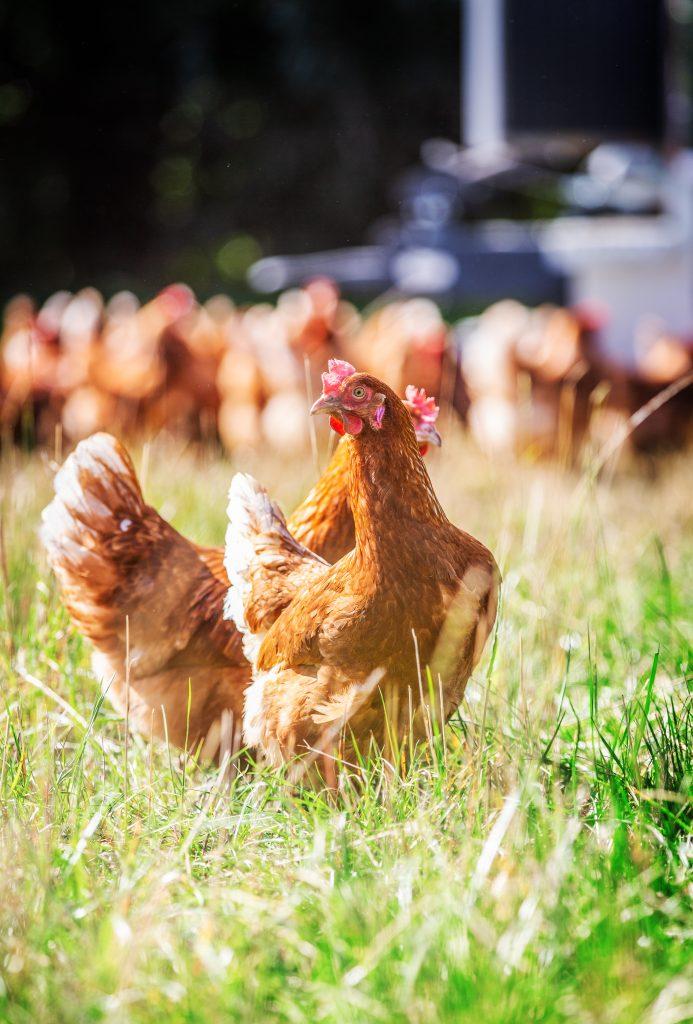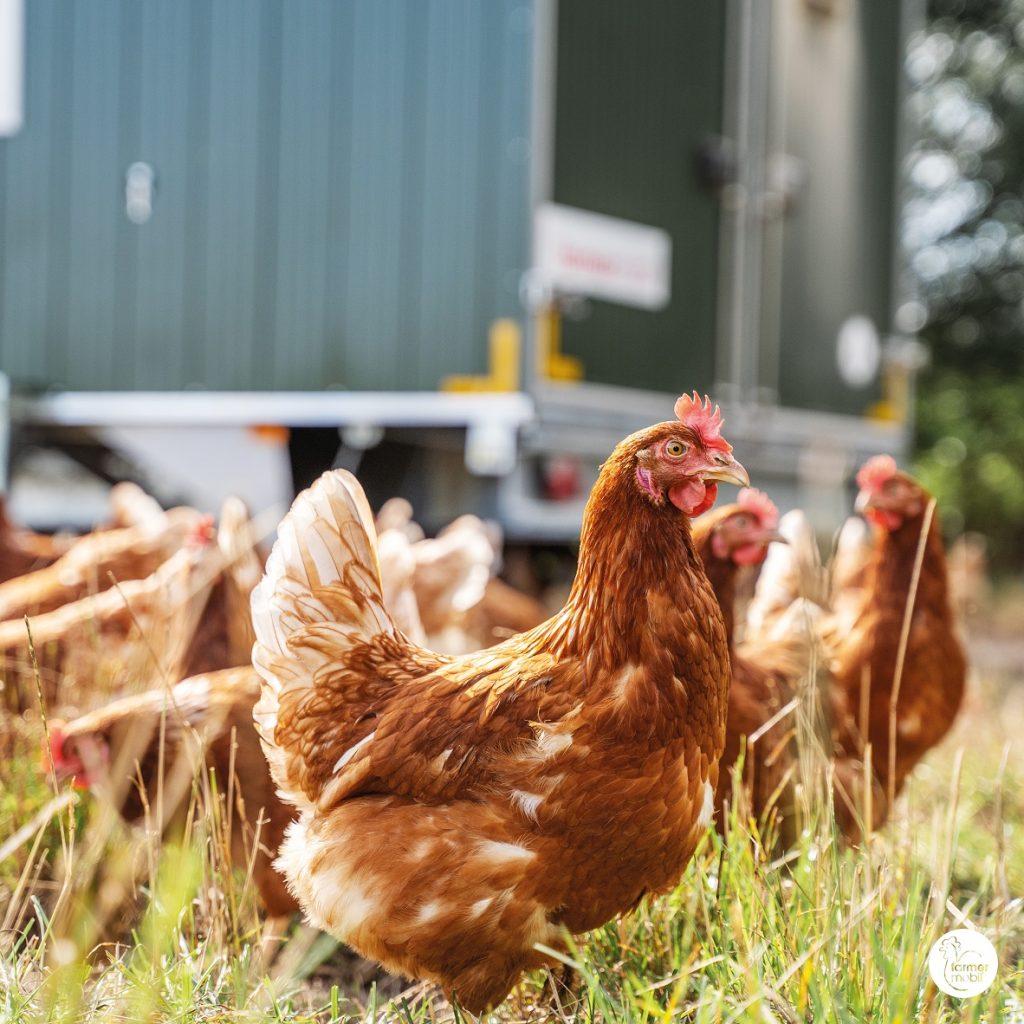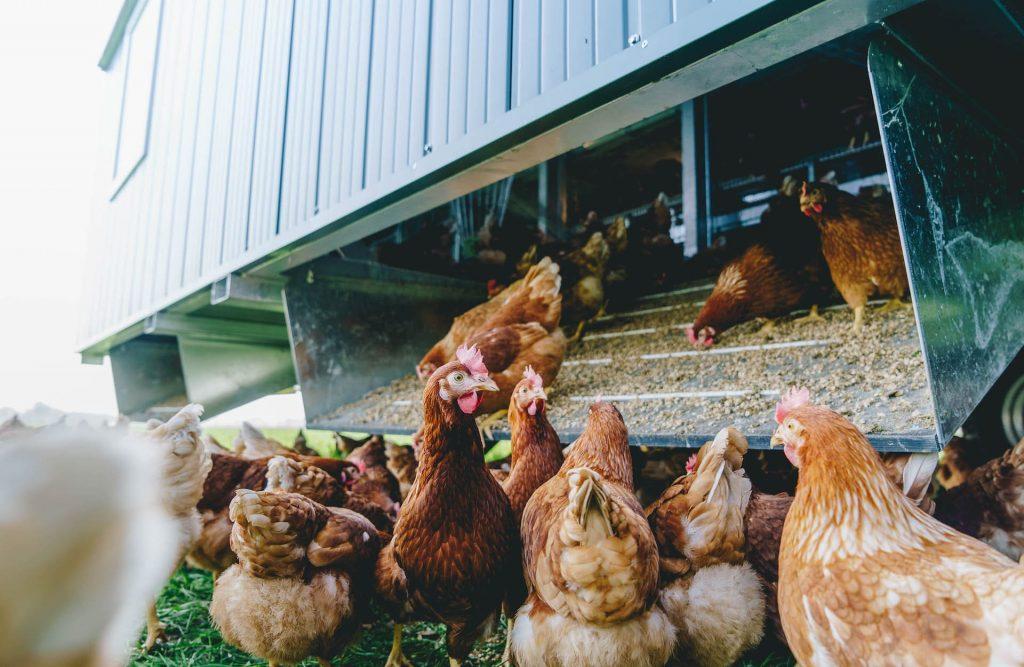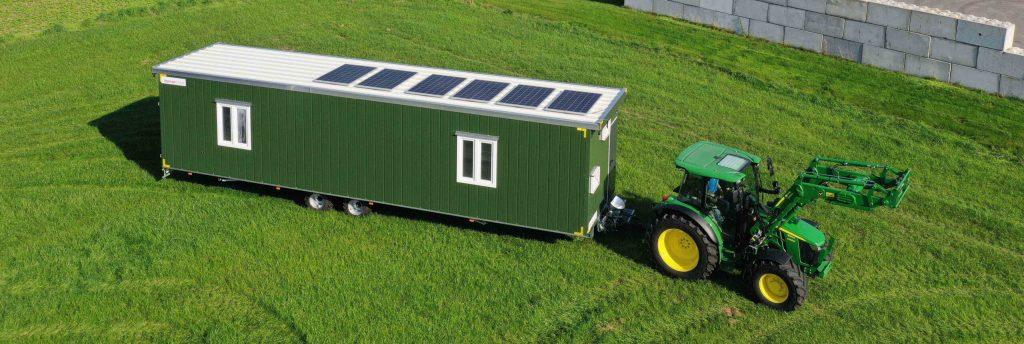Mobile hen house – freedom for your chickens
Species-appropriate animal husbandry requires an unrestricted daily run for the hens. This gives the laying hens the chance to pursue their natural instincts.Ssuch as scratching and pecking, and keeps them occupied. The laying hens consume natural food in addition to their feed. This is a good supplement to the feed and can compensate for deficits. A mobile hen house makes this possible.
However, constant scratching and pecking by the chickens in the same places leads to the area near the coop in particular being heavily worn. This has a negative effect on the vegetation and the soil material, which can even affect the groundwater table. Holes and gullies hinder the seepage of rain or melt water. This in turn can lead to waterlogging and can become a source of disease for the chickens. In order to prevent diseases and the destruction of the sward, there are a few things you should consider in order to be able to utilise your area optimally and gently.
In a nutshell – the minimum requirements for outdoor runs in free-range farming in Germany:
- 4 square metres of exercise area per laying hen
- Unrestricted access to the outdoor run during the day Exercise area must be largely overgrown
- Chickens must not be able to escape from the field
- Do not exceed a radius of 150 metres from the nearest outlet opening
- Maximum radius of 350 metres if the outlet has sufficient protective shelters
- In the following text, we go into the individual points in more detail.

How many square metres do I need to plan for each chicken?
The regulations for the size of the free-range area for laying hens are regulated by law in every country. This requirements differ between free-range and organic farming.
The Animal Welfare Livestock Farming Ordinance stipulates a minimum outdoor area of 4 square metres per hen for free-range farming. If you plan to keep your laying hens organically, the EU Organic Farming Regulation also stipulates that each hen must have 4 square metres of outdoor space. We even recommend that you plan 10 square metres of space per hen for both types of husbandry. So that your hens always have a green and nutrient-rich meadow at their disposal.
The more generously you plan your area at the beginning, the easier it will be to manage the area later on. If you provide 10 square metres per hen and move the mobile hen house regularly, the sward will remain intact and you won’t have to do any time-consuming reseeding.
In addition, the meadow can recover quickly and you will soon be able to place your Hühnermobil on it again.

How often do I have to let the chickens out?
When kept outdoors, your chickens must have unrestricted access to the run during the day. From around 10 am until dusk.
In the dark or at dusk there is a particular risk of predators attacking the chickens. This is why your chickens should spend the night in a secure mobile hen house.

What should the free-range area of my mobile hen house look like?
The area you provide for your chickens should be mostly overgrown and designed in such a way that they cannot escape. When choosing a fence, make sure that it makes it difficult for enemies, such as the fox, to get in.
The fence should be no further than 150 metres from the nearest run opening. Unless you provide your hens with additional protection, in which case it can be up to 350 metres.
A large run without protective shelters ensures that the chickens only stay in the immediate vicinity of the mobile chicken coop. They avoid large open areas without protection from enemies. This means that even with a large run, the area close to the henhouse is subject to increased wear and tear.
Trees, bushes or even artificial shelters serve as protection against enemies from the air and/or the sun in order to optimally utilise your run area. It is best to create various structures in the run area that offer the hens something to do. Protection and opportunities to engage in species-appropriate behaviour. This will ensure that the area is used by every hen at the same time.
Regular relocation for the optimum run-out area
The requirements for outdoor space in free-range systems also apply to mobile hen houses. However, keeping chickens in a mobile henhouse offers the opportunity for better outdoor management compared to a fixed henhouse.
To get the most out of your run, we advise you to move your mobile stable regularly every 1-4 weeks to avoid excessive nutrient input into the soil.
So kannst du deine vorhandenen Weideflächen optimal nutzen und einen übermäßigen Nährstoffeintrag in den Boden vermeiden.
This allows you to make optimum use of your existing grazing areas and avoid excessive nutrient input into the soil.

Our conclusion on mobile free-range farming
In order to make optimum use of your space, we recommend that you not only provide your chickens with the legally prescribed number of square metres of space. But also plan at least 10 square metres per chicken.
It allows you to regularly move the mobile barn onto a green field. Ensuring that the turf is maintained and the soil can recover quickly.
Shelters help you to ensure that your chickens use the entire area and protect them from natural enemies and the heat on hot summer days. When planning your chicken run, you should also consider the right fencing to protect your animals from unwanted intruders.
If you would like to find out more about mobile poultry farming or are interested in other agricultural topics, you can read more interesting articles free of charge on our blog.
We regularly provide an insight into practice on the farm. We look forward to your comments – exchanging ideas with like-minded people is important and helpful. So it’s worth stopping by!
We look forward to seeing you!
If you would like to find out more about our innovative and labour-saving mobile hen houses, you can find detailed information about the different versions of our mobile hen houses here.
We wish you lots of fun!


